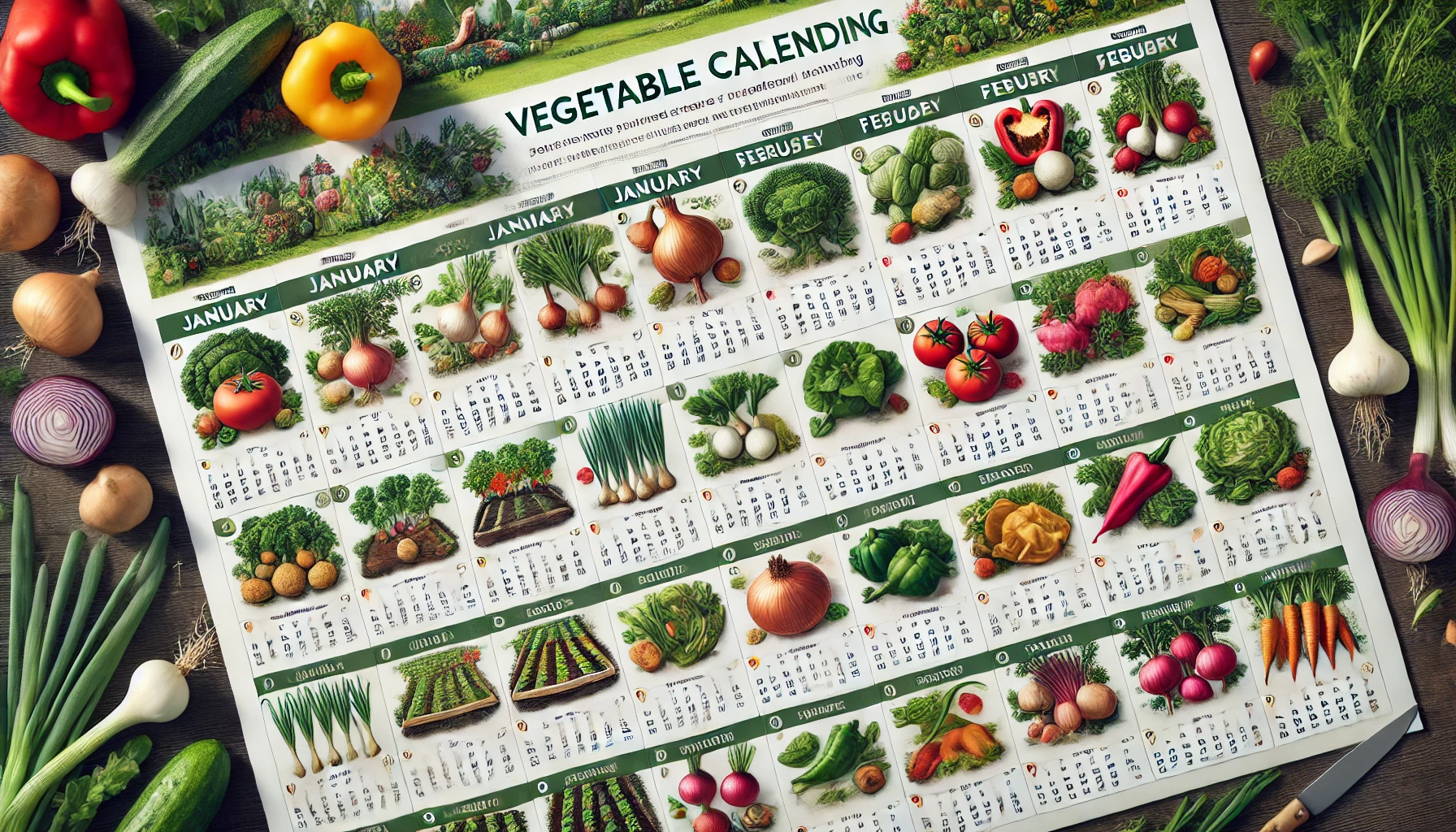Growing your own vegetables can be a highly rewarding and cost-effective way to ensure a steady supply of fresh, organic produce. This comprehensive month-by-month guide will help you plan your vegetable planting throughout the year, ensuring you make the most of every season.
January: Planning and Early Sowing
Start Planning
January is a perfect time to start planning your vegetable garden for the year. Review seed catalogs and make a plan for your plot. The cold weather limits outdoor planting, but there are a few crops you can start indoors.
Planting Undercover
- Onions: Sow onion seeds in a greenhouse. Growing onions from seed is more economical, especially for larger crops.
- Potatoes: Begin chitting early potato varieties. Chitting encourages sprouting before planting, typically six weeks before they go into beds.
February: Prepare and Sow Undercover
Indoor Planting
The unpredictable weather means it’s best to start some vegetables indoors:
- Fava Beans: Sow in pots or modular trays.
- Tomatoes: Sow seeds in propagators or pots for greenhouse cultivation.
- Peppers: Start in heated propagators or sunny windowsills.
- Eggplant: Sow in individual pots; transplant outdoors after the last frost.
Outdoor Preparation
Prepare garden beds by covering them with plastic or cardboard to prevent waterlogging.
March: Outdoor Sowing Begins
Indoor and Outdoor Planting
In milder regions, you can start sowing seeds outdoors. Continue sowing tomatoes, eggplant, and peppers undercover.
- Pumpkin: Sow under cover or directly after the frost.
- Cucumber: Start seeds in pots for greenhouse growth.
- Tomatoes: Sow seeds for outdoor transplanting.
- Asparagus: Plant crowns in late March and April.
Direct Sowing
- Beetroot: Sow in rows; thin seedlings as they grow.
- Fava Beans: Direct sow into enriched soil.
- Leeks: Sow in prepared seed beds or modules.
- Onions: Plant sets from mid-March to mid-April.
- Parsnips: Sow in prepared beds.
- Peas: Sow in trenches for a summer harvest.
- Potatoes: Plant chitted early potatoes.
- Spinach: Sow directly for a summer harvest.
- Spring Onions: Sow thinly for a continual supply.
April: Intensive Sowing Season
Indoor Planting
- Zucchini: Start seeds in pots.
- Sweetcorn: Sow under glass; transplant later.
Outdoor Planting
- Broccoli: Sow directly or transplant seedlings.
- Carrots: Sow thinly in rows.
- Cabbage: Sow winter varieties.
- Cauliflower: Sow outdoors for transplanting.
- Chard: Sow for a continual harvest.
- Potatoes: Plant second early and maincrop varieties.
- Salads and Lettuce: Sow directly.
May: Hardening Off and Direct Sowing
Outdoor Planting
- French Beans: Direct sow after the last frost.
- Zucchini: Sow directly or transplant hardened plants.
- Pumpkin: Direct sow in late May.
June: Successive Sowing
Direct Sowing
- Fennel: Sow seeds directly in fertile soil.
- Brassicas: Sow kale, cabbage, broccoli, and Brussels sprouts for winter harvesting.
July: Last Chance for Some Crops
Outdoor Planting
- French Beans: Final sowing for the season.
- Chard: Sow for autumn harvest.
- Spring Cabbage: Sow for spring harvest.
- Pak Choi: Sow for a quick harvest.
August: Winter Crop Planting
Outdoor Planting
- Spinach: Sow a second crop for autumn.
- Kohlrabi: Sow for a late autumn harvest.
- Winter Salads: Sow hardy varieties for winter.
September and October: Preparing for Winter
Planting
- Garlic: Plant sets for next year’s harvest.
- Fava Beans: Sow for an early spring crop.
November: Limited Planting
Harvesting
Continue harvesting root vegetables and hardy salad leaves.
Planting
- Asparagus: Plant crowns for an early start.
December: Planning and Soil Preparation
Winter Salad
- Winter Salad: Sow mustard greens, mizuna, and lamb’s lettuce in cold frames or unheated greenhouses.
Final Planting
- Garlic: Last chance to plant fall garlic varieties.
Conclusion: Year-Round Vegetable Planting
Vegetable planting is a year-round activity with different crops suited to different months. Use this guide to plan your planting schedule, ensuring a continuous supply of fresh produce. Whether you have a large garden or just a few containers, following this month-by-month guide will help you achieve a successful and rewarding vegetable garden.
